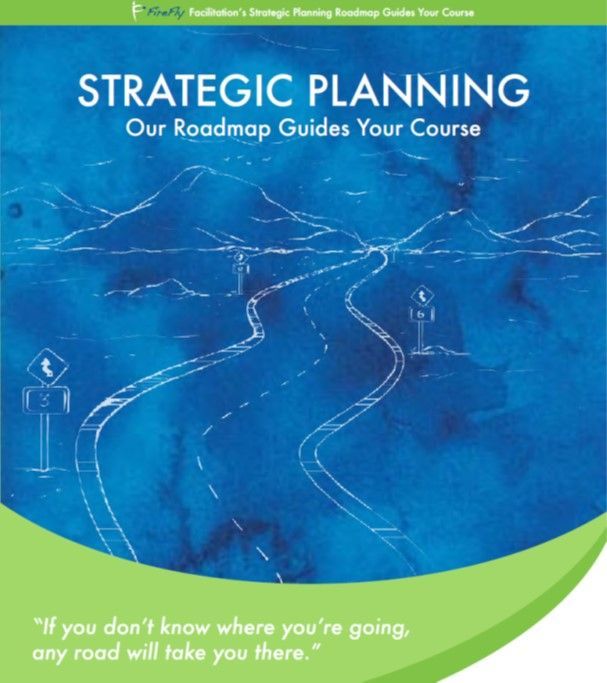My Top 5 Strategic Planning Process Improvements
20+ years of strategic planning facilitation experience captured in a blog post...
In my last post, I shared my strategic planning metaphor. In this post, I will share my top 5 strategic planning process improvements.
In my 20+ years of facilitating strategic planning and team development sessions for all types of organizations, I have refined my thinking and my process in these five key areas:
Change #1: Open it Up
It is more important than ever to get as much involvement as possible from the entire organization. Strategic planning should not be the sole province of the executive leadership. The more you can involve—and I mean truly involve—in the creation of the plan those who will be accountable for actually executing it, the more commitment (as opposed to mere compliance) you will obtain. People like to see their “fingerprints” on something they are being charged with carrying out.
Change #2: Plan for Less, Get More
Do you still use a five to ten year cycle for your planning horizon? I now recommend that my clients look only three years into the future to set their vision. Change is happening much too quickly for there to be accuracy in planning beyond that. There isn’t “visibility,” as you might hear the pundits say. People truly can’t envision a longer future. Twelve months ago, could you—or anyone—have predicted the world we find ourselves in today? Set the vision two to three years out; then couple that with a very concrete, practical action plan for the next twelve months.
Change #3: Hone on the Range
Instead of talking about a mountain for the vision, I should really call it a mountain range. The vision for future success is rarely a singular point in the future. I used to spend quite a bit of time during and after a strategic planning session working with the board, senior team, or a sub-committee to refine a mission and/or vision statement that would be “suitable for lamination.” I think it is much more important that everyone in the organization be in agreement directionally and less to be in agreement literally. I have found that the conversation sparked is more important than the actual statement we developed (which always ended up reading as though it had been created by a committee … because, in fact, it had!).
Change #4: Begin at the End
I was trained as an organization effectiveness leader at Coca-Cola to begin a strategic planning session with reaching agreement on a very clear picture of where you are today. “How can you effectively plan for the future without the hard, cold reality of your current state?” some ask. I say that most teams are acutely aware of the difficulties of their current state. My experience has shown that they are better served to think aspirationally first. Now, in almost every case (the exception being when there are extremely divergent views of the current state), I begin with the end in mind, creating the vision for the future. Once this picture is clearly in each person’s mind, I assure you a more targeted, accurate assessment will follow.
Change #5: Swat the SWOT
This may be heresy in some strategic planning circles, but I have switched from the conventional SWOT (strengths, weaknesses, opportunities, and threats) analysis to the lesser-known but much more effective Force Field Analysis for assessing the current reality . I simply facilitate the identification and discussion of those forces working for and against our success in making this vision a reality. Too often with the SWOT (and I know you have all been there), what should have been a healthy dialog denigrated into unhealthy conflict over which box to put something in . Was it a strength or an opportunity? A weakness or a threat? Instead, through a deeper level of conversation, we found that in fact the same factor could be both positive and negative, and thus we could focus the majority of our attention on how to address it.
By making these changes to your annual strategic planning session, you will develop a plan that gets the whole organization aiming in the same direction and catapults your results to even higher levels of success!






